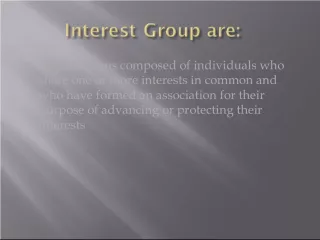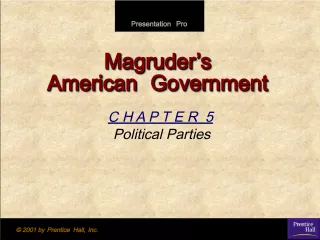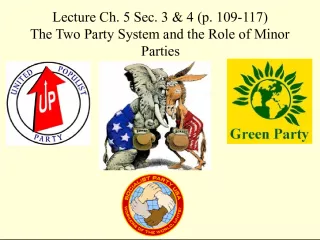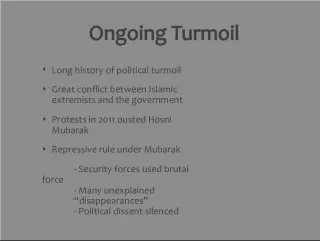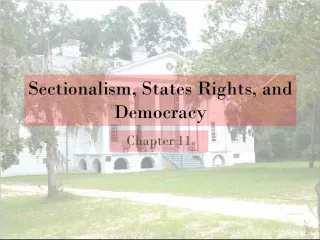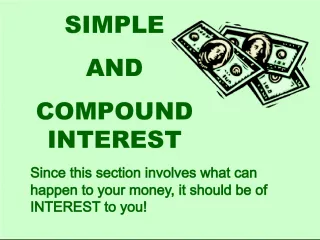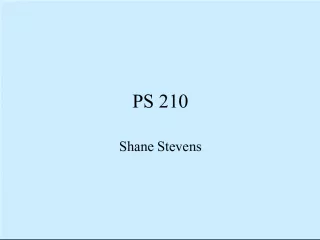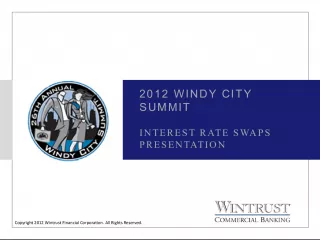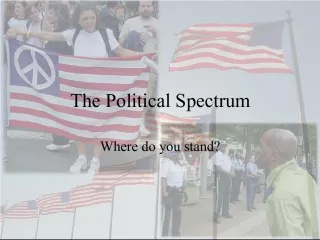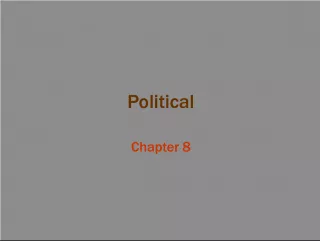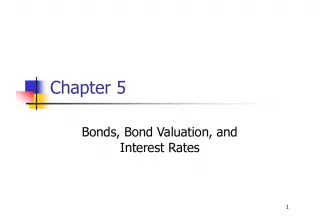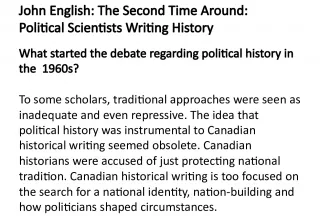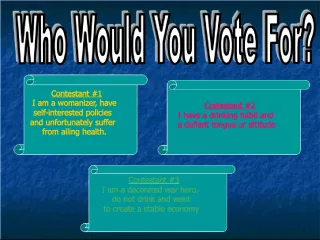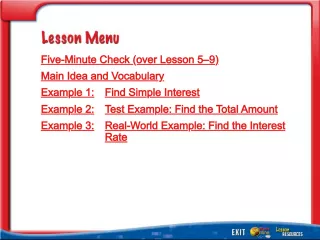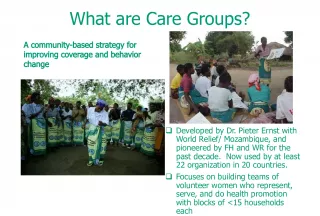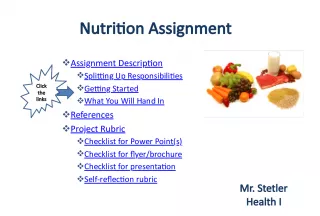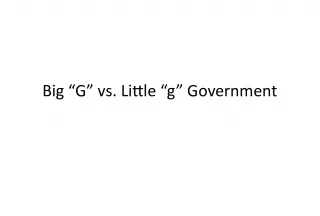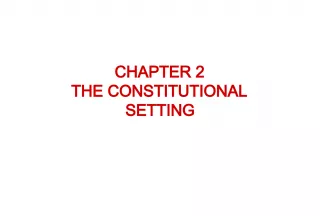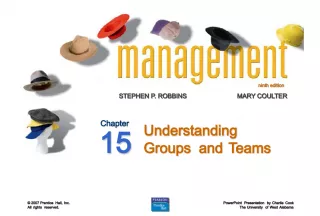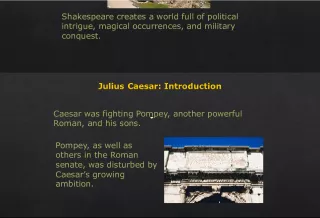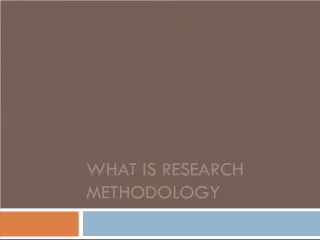Political Parties Vs. Interest Groups
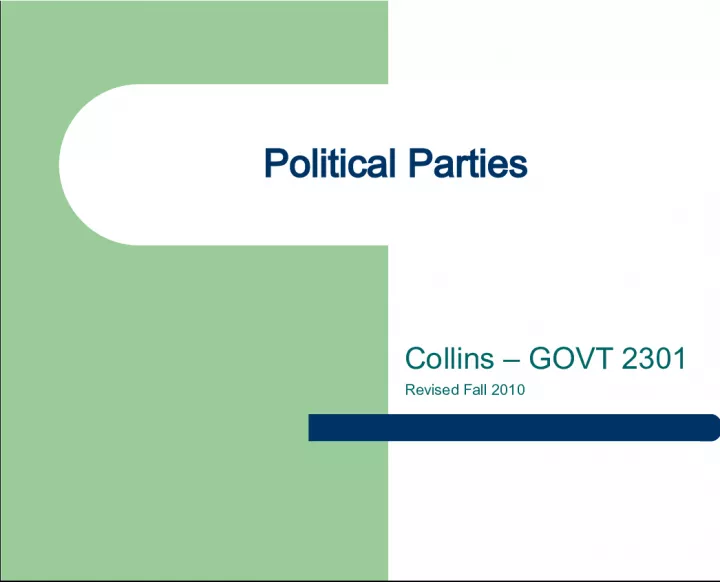

This article discusses the key differences between political parties and interest groups, two forms of organized groups involved in American politics. Political parties, as defined in Collins GOVT 2301 Revised Fall 201
- Uploaded on | 0 Views
-
 jeremiahhunter
jeremiahhunter
About Political Parties Vs. Interest Groups
PowerPoint presentation about 'Political Parties Vs. Interest Groups'. This presentation describes the topic on This article discusses the key differences between political parties and interest groups, two forms of organized groups involved in American politics. Political parties, as defined in Collins GOVT 2301 Revised Fall 201. The key topics included in this slideshow are . Download this presentation absolutely free.
Presentation Transcript
Slide1Political PartiesCollins – GOVT 2301 Revised Fall 2010
Slide2Definition Group of persons who seek to control govt through the winning of elections and the holding of public office
Slide3Difference between Political Partiesand Interest Groups (IG) Key difference? Pol parties RUN CANDIDATES under their own label; IG only seek to influence Pol parties have broad range of concerns , (platform); most IGs have a narrow, or single, range of topics Pol parties are subject to fed, state and local laws and regs ; IG are purely private and free of govt regs
Slide4Pa r t y O r g a n i z a t i o n 3 parts – Party-in-the-electorate – Party as organization – Party in government
Slide5Party-in-the-electorate People who perceive themselves as members of a party How join? Just claim it! “I’m a _____.” Party ID and split-ticket voting = inverse relationship
Slide6Party as an Organization Keeps the party running in-between elections Makes party rules – Old days of party machines and patronage Unifies various states’ groups into national cohesive unit Formalizes the platform every 4 years at convention – www.presidency.ucsb.edu/platforms.php
Slide7Party in Government Consists of elected officials Attempts to coordinate party policies into legislation Spokespersons for party in the electorate Enacts party functions
Slide8Pa r t y = L i n k a g e i n s t i t u t i o n A tool to connect a person with its government Does not include constitutionally established institutions of govt such as Congress, courts, etc
Slide9Party functions1. Nominating candidates and winning office – Recruit qualified candidates (screen and filter) – Operate machinery for elections – Manage smooth transition of power – Coordinate and assist, but no longer run, candidates’ campaigns
Slide10Party functions –2. Informing and activating supporters – Inform public of issues Technical data Cost-benefits Propaganda – Stimulate public participation – Channel public support/opposition – Give cues to voters – Build coalitions to win and later pass party agenda
Slide11Party functions –3. Ensure good performance – “seal of approval” or bonding agent – Ensure elected officials follow party platform as they represent the party (party reputation) – Turn party platform into legislation – easier for majority party Unified party control = one party controls all parts of govt Divided party control = when each party controls at least one branch of the govt – Ensure party reputation for next election – Accountability to the voters
Slide12Party functions –4. Party in government – Provide basis for how govt works – Defend status quo – Staff government
Slide13Party functions –5. Watchdog – Conducted mostly by party out of office (minority) – Makes sure majority party does not abuse power or rules – Guards the system
Slide14Party functions –6. Policy making – Articulate and coordinate policy – Support party legislation
Slide15Downs model = rational-choice theoryWise party moves toward center -- where majority of voters located -- with broad public appeal Goal of winning elections more important than party ideology Parties differentiate slightly in order to create different IDs to create voter loyalty
Slide16Vs. Responsible Party govt – Voters should have a clear choice among parties advocating distinct and different positions Elected members vote for their party’s position Majority party enacts its position into law
Slide17Responsible party govt – (cont)Party accepts responsibility for performance of govt (collective responsibility) Results in increased popular control of govt as votes correlate to clear policy directives; “you get what you vote for”
Slide18Obstacles to responsible party govt1) Parties too decentralized to take a single natl position 2) Anyone can run for office, therefore party has no control over those who do run 3) No method for party to discipline wayward officeholders and ensure cohesion in policymaking
Slide19Weakening of Party power –Influence of media; party no longer main sources of pol. info Technology of campaigning; easy to bypass party in candidate-centered campaigns Increased power of interest groups Voters no longer need party to find out what candidate is like, issues, etc [TV, Internet]
Slide20Third parties ……… do EXIST!!!!!!!!
Slide21Functions of 3rd Parties 1) Vent for those upset with the system 2) Bring new groups into the electorate 3) Bring new issues to the political agenda 4) Critic of system 5) “Spoiler”; may effect electoral college votes (ex Perot ‘92, Nader 2000)
Slide22Types of 3rd Parties Single issue party [ex. Prohibition Party, Free Soil Party] Splinter parties – offshoots of a major party [ex. Bull Moose Party; Thurmond’s States’ Righters or Dixiecrats (’48) Ideological party – broad pol beliefs radically dif from mainstream ex. Communist Extension of an individual [ex. John Anderson (’80) and Ross Perot (’92, ’96)
Slide23Obstacles to 3rd Parties 1] Voters don’t want to waste their votes – assume only major 2 parties have chance of winning 2] State and federal laws favor the 2 parties – each state dif criteria for getting on ballot; fewer requirements, if any, for major parties In Congress, indep must choose to side with Dem/Rep in order to make com’tee assignments
Slide24Obstacles [cont]Winner-take-all sys win by one vote, cand gets all that state’s EC votes US plurality sys of voting =df a type of electoral sys in which to win a seat in the rep body, a cand need only receive the most votes in the election, not a majority US single member districts plurality election vs. multiple member district in other nations
Slide25Is the party over?Party realignment? Usually requires critical election/crisis as voters shift in large numbers to one party; also covers major party absorbing 3 rd party Party dealignment? Voters moving away from both parties to independents
Slide26What part did I skip?History of pol parties – from Federalists and Antifederalists to the present Republicans and Democrats, aka party eras Why? Seldom asked on AP test AP more emphasis on Fed-Anti debate, early dislike of factions (Madison and Washington), reasons for growth and decline in power during last 3 decades
